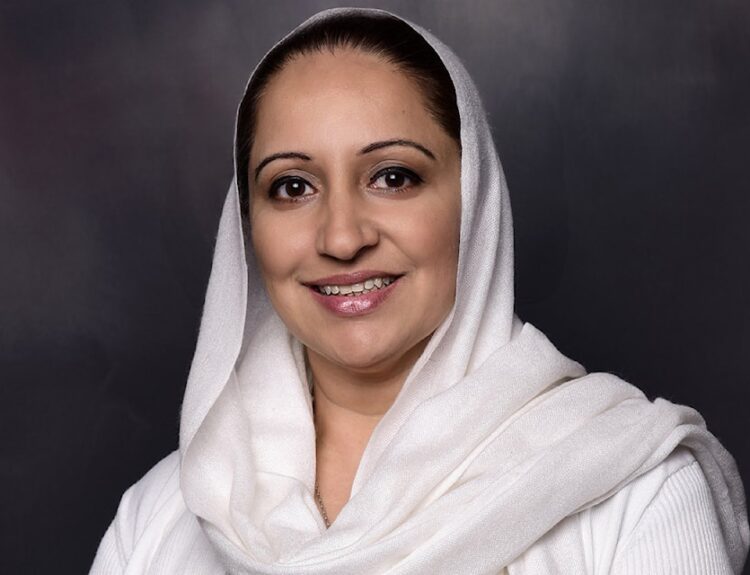Last year was a deadly one when it comes to illicit drug deaths like fentanyl overdoses and other drug related fatalities. The toxic illicit drug supply claimed the lives of at least 2,224 British Columbians in 2021, according to preliminary data released by the BC Coroners Service. “Over the past seven years, our province has experienced a devastating loss of life due to a toxic illicit drug supply,” said Lisa Lapointe, chief coroner. “This public health emergency has impacted families and communities across the province and shows no sign of abating.”
By DESIBUZZCanada Staff
VICTORIA – Last year was a deadly one when it comes to illicit drug deaths like fentanyl overdoses and other drug related fatalities.
The toxic illicit drug supply claimed the lives of at least 2,224 British Columbians in 2021, according to preliminary data released by the BC Coroners Service.
“Over the past seven years, our province has experienced a devastating loss of life due to a toxic illicit drug supply,” said Lisa Lapointe, chief coroner. “This public health emergency has impacted families and communities across the province and shows no sign of abating. In 2021 alone, more than 2,200 families experienced the devastating loss of a loved one. In the past seven years, the rate of death due to illicit drug toxicity in our province has risen more than 400%. Drug toxicity is now second only to cancers in B.C. for potential years of life lost. We cannot simply hope that things will improve. It is long past time to end the chaos and devastation in our communities resulting from the flourishing illicit drug market, and to ensure, on an urgent basis, access across the province to a safe, reliable regulated drug supply.”
The last two months of 2021 saw the largest number of suspected illicit drug deaths ever recorded in the province, with 210 deaths in November and an additional 215 in December. The 2,224 total number of deaths is 26% more than the 1,767 illicit drug-related deaths investigated by the BC Coroners Service in 2020, and equates to an average of 6.1 lives lost every day.
“It is with a heavy heart that our province continued to experience an unprecedented number of lives lost to the toxic drug supply in 2021. It is beyond devastating that we lost 2,224 peopl:, our brothers, sisters, children, parents, neighbours and friends to toxic drugs. No words can soften these losses,” Sheila Malcolmson, Minister of Mental Health and Addictions.
“The number of people who died from the toxic drug supply last year is unacceptable and we must do more to prevent this tragic loss of life. While the Province is adding new services and supports to our health-care system each week, B.C. faces a rising tide of need.”

The provincewide death rate in 2021 was 42.8 per 100,000 residents. Every health authority in B.C. experienced a record loss of lives.
Since the public health emergency into substance-related harms was first declared in April 2016, more than 8,800 British Columbians have been lost to toxic drugs.
Toxicological testing once again underscores the reality that the illicit drug supply continues to be unstable and increasingly toxic. Fentanyl was detected in 83% of samples tested in 2021. Carfentanil was present in 187 results, almost triple the number recorded in 2020 (66).
Additionally, 50% of samples in December tested positive for etizolam, more than three times the rate of detection in July 2020 (15%). Benzodiazepines create significant challenges for life-saving efforts as naloxone does not reverse its effects. As with previous reporting, almost all test results included the presence of multiple substances.
“We need decision-makers at all levels to recognize and respond to this public health emergency with the level of urgency it demands,” Lapointe said. “The reality is this: every day we wait to act, six more people will die. COVID-19 has shown what is possible when goverments act decisively to save lives. And in order to save lives in this public-heath emergency, we need to provide people with access to the substances they need, where and when they need them. Time has run out for research and discussion. It is time to take action.”
Additional key preliminary findings are below. Data is subject to change as additional toxicology results are received:
* In 2021, 71% of those who died as a result of suspected drug toxicity were between 30 to 59, and 78% were male.
* The townships that experienced the highest number of illicit drug toxicity deaths in 2021 were Vancouver, Surrey and Victoria.
* By health authority, in 2021, the highest numbers of illicit drug toxicity deaths were in the Fraser and Vancouver Coastal health authorities (765 and 615 deaths, respectively), making up 62% of all such deaths during this period.
* By health authority, in 2021, the highest rates of death were in Vancouver Coastal Health (49 deaths per 100,000 individuals) and Northern Health (48 per 100,000).
* By Health Service Delivery Area, in 2021, the highest rates of death were in Vancouver, Thompson Cariboo, Northwest, Northern Interior and Fraser East.
* By Local Health Area, in 2021, the highest rates of death were in Upper Skeena, Merritt, Enderby, Lillooet and North Thompson.
“The number of deaths due to toxic drug poisonings for 2021 translates to devastating losses of First Nations people: daughters and sons, aunties and uncles, mothers and fathers, sisters and brothers, and grandfathers and grandmothers. These are people who loved and were loved. In every year since this public health emergency was declared, B.C. First Nations people have been over-represented in toxic drug-poisoning events and deaths. We must change our understanding of the root causes of substance use and addiction, and work together to address the stigmas surrounding toxic drug use and the people who use drugs. We must continue to invest in Indigenous-specific, culturally safe harm-reduction, treatment and recovery services that are accessible, timely and free from discrimination and racism,” said Dr. Nel Wieman, deputy chief medical officer, First Nations Health Authority.















3 Comments
ohne anmeldung casino spiele
7 days agoWie bei jeder Glücksspieleinrichtung können individuelle Erfahrungen variieren, und potenzielle Besucher
werden ermutigt, aktuelle Überprüfungen zu erforschen, bevor sie ihren Besuch planen. Die Suchergebnisse
bieten keine spezifischen Benutzerbewertungen für das Casino
-Resort – Spielhalle Frankfurt Bornheim. Als in Deutschland tätiger
Glücksspielunternehmen ist Casino Resort – Spielhalle
Frankfurt Bornheim einer strengen regulatorischen Aufsicht unterliegt.
Erfahre alles über die besten Spielotheken in Wiesbaden. Diese Spielhallen werden rechtlich als Gaststätten gesehen und unterliegen einem strengen Rauchverbot.
Spielhalle Langen, MIRO Spielautomatenaufstellungs GmbHDieburger Str.
Spielhalle ZentaurusFriedhofstraße 1, AalenSchließt um 00.00 Uhr Jackpot CasinoSchubartstraße 14, Aalen Power Play SpielhalleSchubartstraße 00.00, Aalen In den Automatencasinos
Baden Württemberg kommen volljährige Menschen aus allen Altersstufen,
Herkünften und sozialen Schichten zusammen. Bis zu 1.000 EUR Casino Bonus+ 150 EUR Freispiele+ 100% Sportwetten Bonus
Calwer Oase SpielhalleBahnhofstraße 65, CalwSchließt um 00.00 Uhr CASINOSTATIONSchönbuchstraße 37, BöblingenSchließt um 00.00
Uhr Spielcenter BösBahnhofstraße 2, BruchsalSchließt
um 00.00 Uhr
References:
https://online-spielhallen.de/total-casino-deutschland-spiele-boni-zahlungen/
High stakes UK online casinos
17 hours agoThe Casino is visited by both local, national and international people in pursuit of entertainment of great variety, which includes not only the gambling but music,
restaurants, sporting events and exhibitions. Join us and discover exceptional
dining Join us to discover exceptional dining The dress standard for
the Casino is smart casual; customers must be clean,
neat and tidy at all times. An effortless combination of premium Casino Gaming with unmatched
service and attention to detail, the Pearl Room is the
home of the ultimate luxury Gaming experience in Perth.
Complete the experience with something sweet from the Epicurean Perth buffet as
you choose from the most spectacular confectionery, which the young and young-at-heart are sure to love.
The ever-evolving menu offers an extensive range of culinary specialities from global cuisines, including Indian, Japanese,
Chinese, Italian and more. Please note some shows do stipulate that
everyone regardless of age must have a paid ticket, so please check the website for more show specific information.
This email address is reserved for patrons with accessibility requirements and
companion card holders. Those patrons wishing to use a
companion card with the booking must be able to present the valid card at the box office upon ticket collection. See here for further information about parking,
taxi ranks and public transport.
The BBC station described the story of a gamer addicted to spending money in the FIFA series.
According to the plaintiff, these lootboxes are nothing but a game
of chance, an example of gambling, which is illegal in this state.
Most of them are limited to minor modifications in the
game mechanics. FIFA 20 enables the players to play matches, games and tournaments with licensed national
and club teams from around the world. EA Sports is once again responsible for the development of the game.
As every year, we can find real-life players and teams in the game, which we lead to victory
in subsequent matches.
References:
https://blackcoin.co/best-new-online-casinos-to-play-for-real-money-in-2025/
what happened to lakeside inn casino
10 hours agoWhether you are a seasoned gambler or a newcomer to the world
of gaming, there is something for everyone at Casino
Canberra. Casino Canberra is a premier entertainment destination located in the
heart of the Australian capital city. Head to natural nine to treat your self with a unique Yum Cha experience.
Join us for an unforgettable meal at natural nine, where traditional festive cheer meets traditional Chinese flavours.
There’s no better way to cheer on your favourite team.
With no pokies to offer (yet), Casino Canberra specialises in both modern and traditional table
games. Casino Canberra is the only Australian venue of its kind that is
not licensed to operate pokies machines. You must be available to work
on a rotating roster including shifts on days,
nights, weekends and public holidays on a full-time, ongoing basis.
No previous experience in gaming is necessary as you will learn all that you need to start your career as a
Table Games Dealer and you will be paid while you learn.
References:
https://blackcoin.co/galaxy-96-casino-a-comprehensive-review/